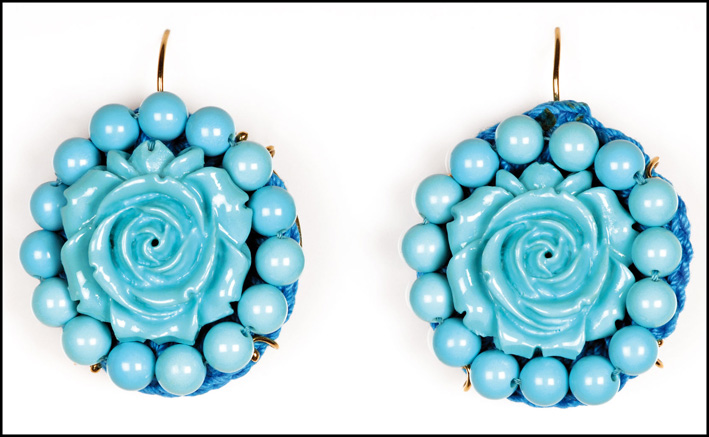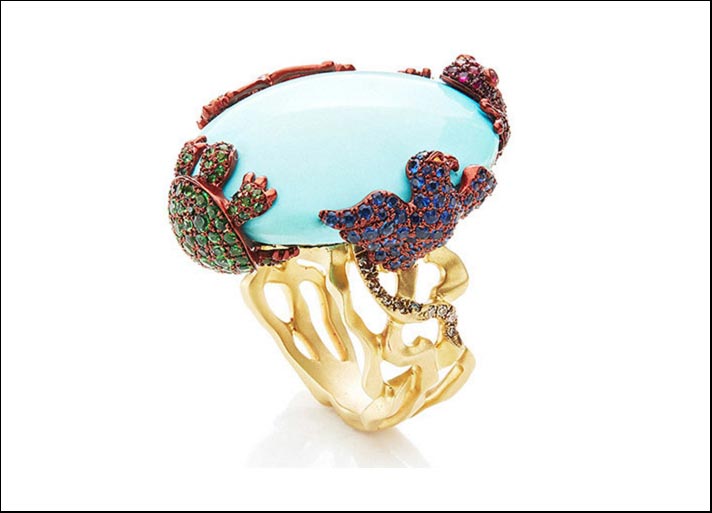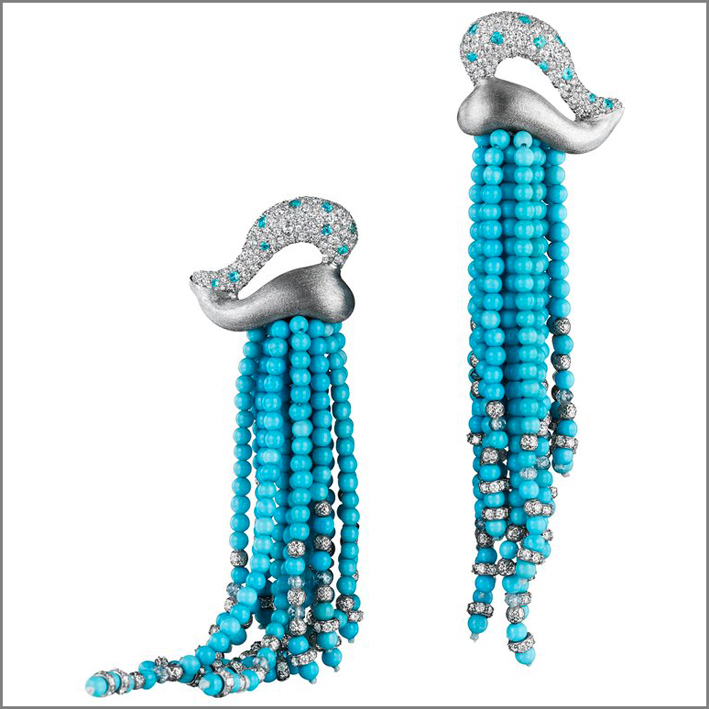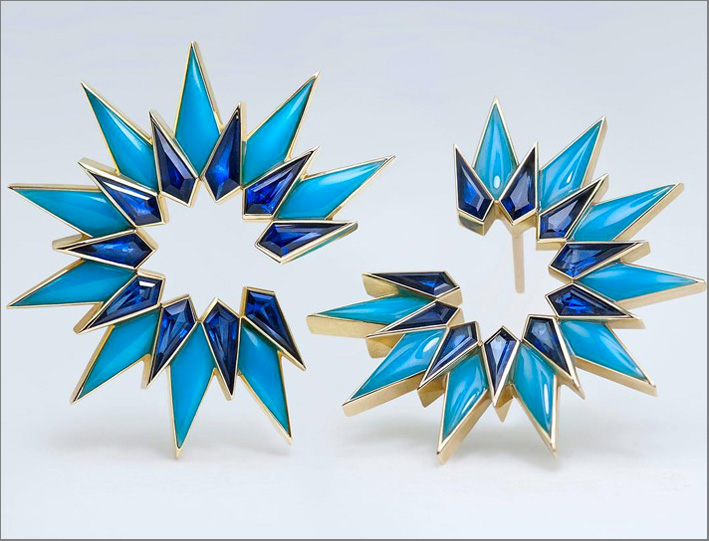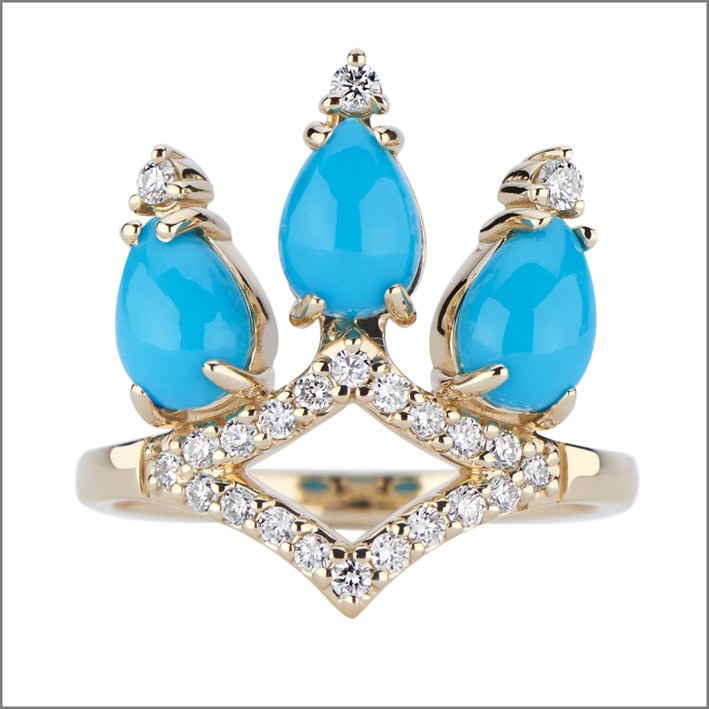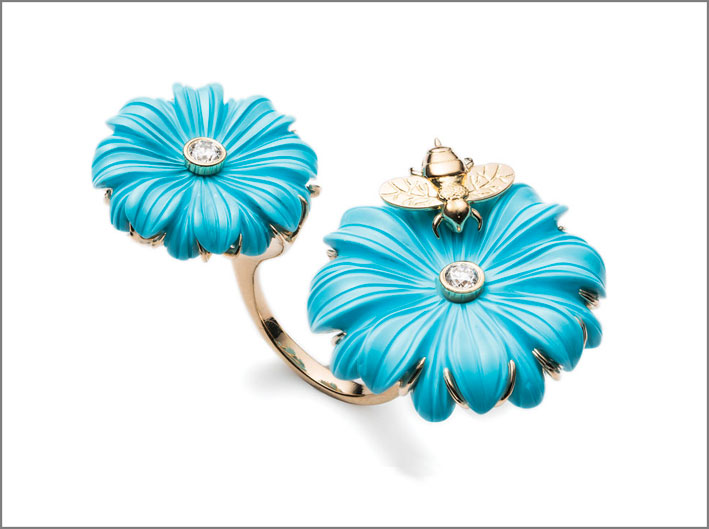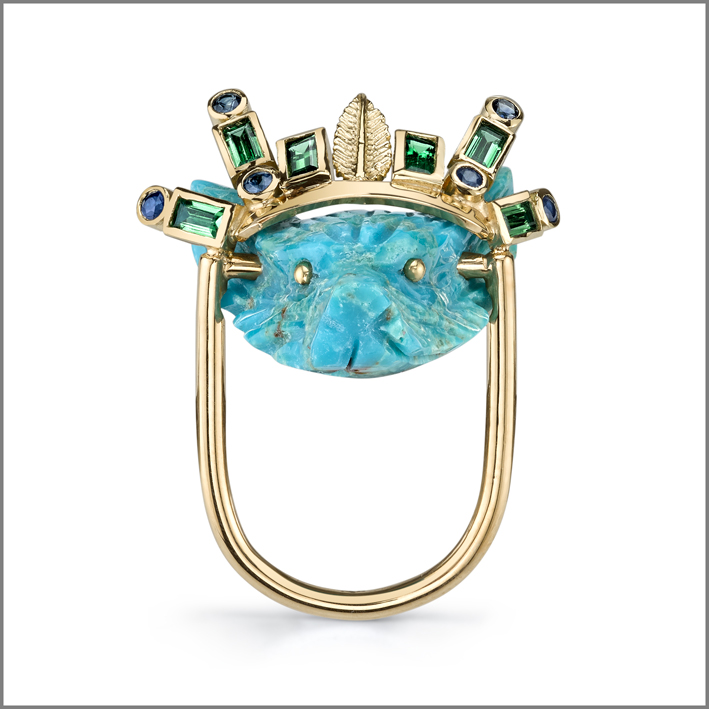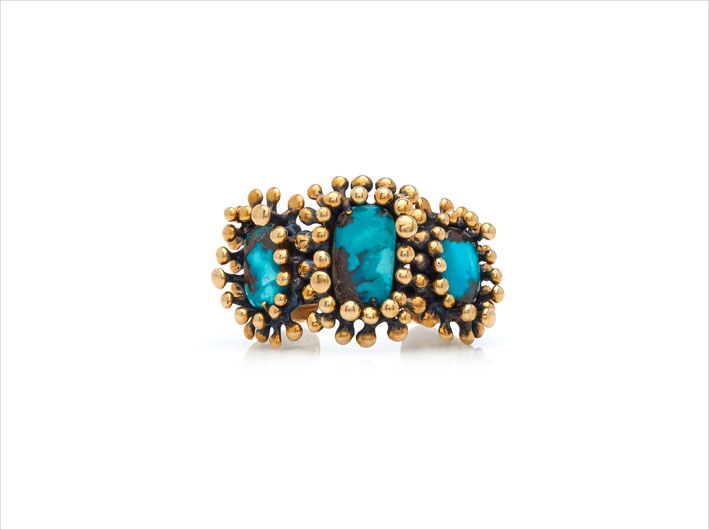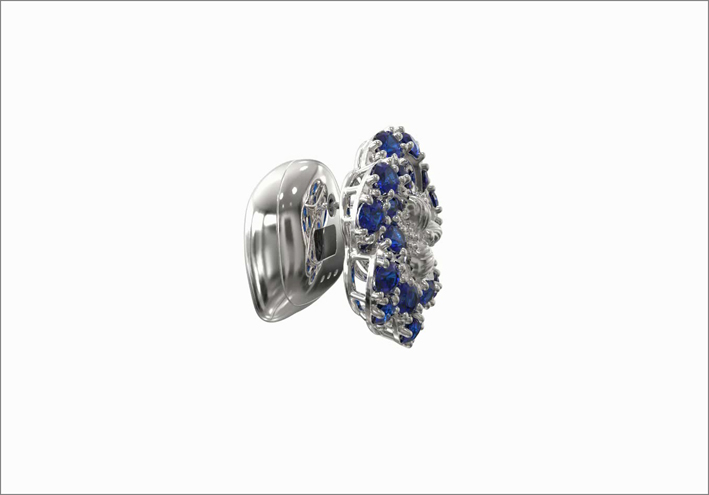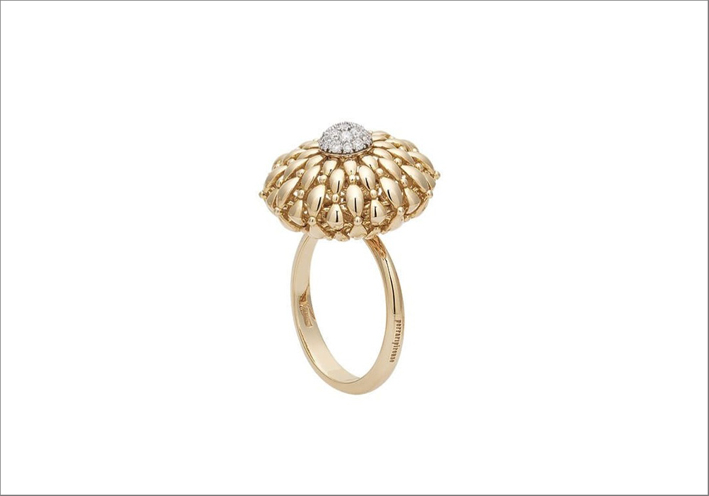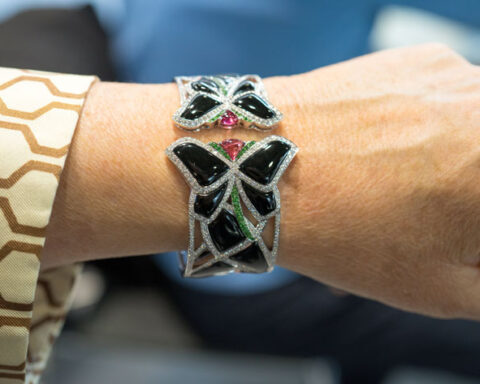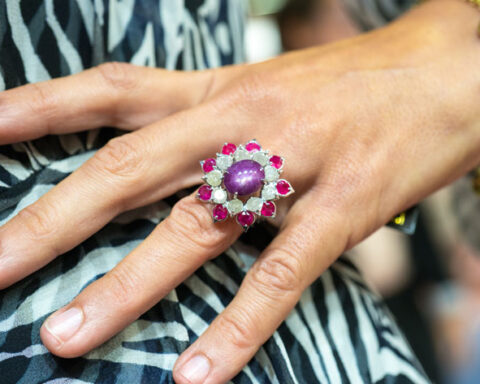The turquoise, stone of the month of December. Find out why turquoise can be easily altered and how to clean and store it ♦ ︎
It is the stone that, according to tradition, accompanies the month of December. But turquoise has an even older history than the (recent) custom of combining a stone for each month of the year. In fact, turquoise has been used since antiquity as a precious and ornamental stone.
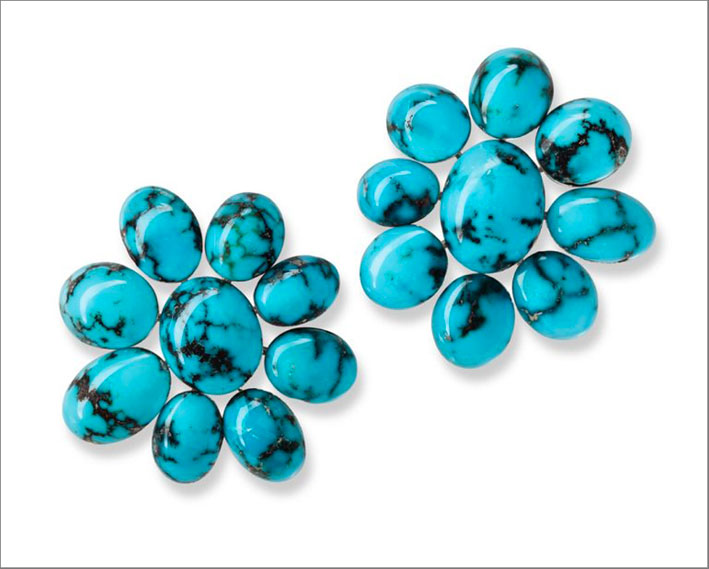
History. The Egyptians at the time of the Pharaohs obtained it from the mines of the Wadi Maghara, in the Sinai peninsula. The oldest turquoise is the one used for a bracelet that dates back to about 8000 years ago, discovered in Egypt. And another jewel with turquoise was found in the sarcophagus of a mummy of 7,500 years ago. The blue stone was also used by the Aztecs, the Maya and the Incas, as well as among the Native Americans. It was also known to the ancient Romans: it was used for a bust of the Emperor Tiberio, preserved at the Silver Museum of Florence. Other turquoise stones are found in the Treasure of San Marco, in Venice.
The name. Why is turquoise called with this name? Simple: the word comes from the French term to indicate Turkey. In fact, the mineral was introduced to Europe via Turkey, from mines in the province of Khorasan, in Persia. The first use of the word turquoise to indicate the stone is from 1573.
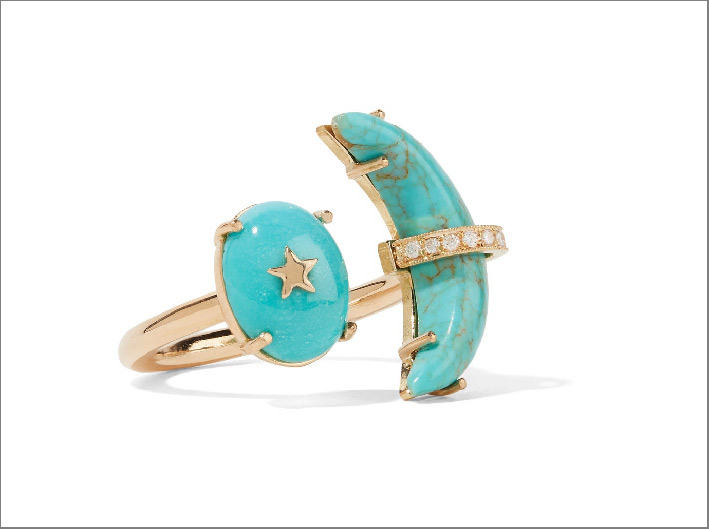
Where is it. Turquoise is usually found in arid regions, in filler cavities, often with associated limonite and other iron oxides. The largest production is located in Iran, Egypt (Sinai), United States.
Features. Turquoise is a blue-green mineral. It is opaque, with a uniform blue color or some brown or black dendritic veins of limonite. It is very rare in the form of transparent crystals. Its porosity often causes alterations to the original color. The turquoise reaches a maximum hardness of 6 on the Moh scale (the diamond is at 10). In practice it is slightly harder than a window glass. The color is variable: from white to sky blue, up to yellowish green.
Use. The most used cut is cabochon, ie with a curved surface without facets.
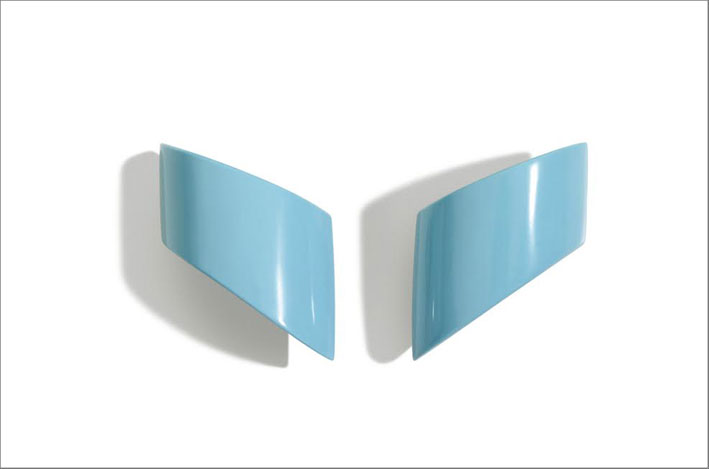
Turquoise care. Since it is a medium hard stone, turquoise is usually treated to improve color and strength. Attention, therefore, because it is difficult to provide all the information to those who buy a jewel with turquoise. For example, turquoise is often subjected to waxing and oiling, to improve color and shine. This is a traditional and generally accepted treatment. However, oiled and waxed stones tend to “sweat” if they are exposed to the sun or to a source of heat. In this case they can develop a film or a white patina. In that case it is better to bring the jewel back to an expert who can make the stone bright again. But there are also turquoises treated with plastic or glass. This process consists of impregnating under pressure the chalky material, an epoxy and plastic resin (such as polystyrene) and glass powder (sodium silicate). Plastic and glass water treatments are much more durable and stable than wax and lubrication. But it is a non-natural method, which is rejected by many. Most of the turquoises in the United States are treated with this method. There is still an even stronger method: using Prussian blue or other dyes. Obviously in this way the stone is even more altered than its natural state.
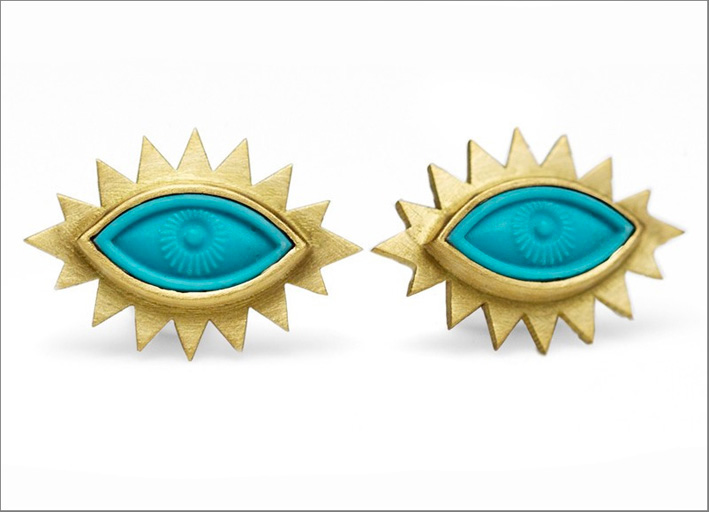
Treatments for turquoise. The residual fragments of the processing, too small to be used individually, are pulverized and mixed with resin and color to form a solid mass. However, this procedure should be clearly explained. Usually, however, the use of this paste is hidden behind the description of “reconstituted turquoise”. In reality it has little natural stone. In the USA it is often also glued to a material that is the basis of the jewel, to increase its solidity.
How store the turquoise. Turquoise is quite delicate: it is fragile and sensitive to solvents. Perfume and other cosmetics are enemies of turquoise: they can alter the color of the stone. Even the sweat can affect the turquoise. Prolonged exposure to direct sunlight can discolor or dehydrate the stone: it is better not to wear jewelry with turquoise on the beach or in other places exposed to the long sun. The turquoise should be cleaned gently with a soft cloth to avoid the accumulation of residues and must be stored in a separate container, to avoid scratches from harder buds. But, beware: better let it breathe, so avoid an airtight container.

